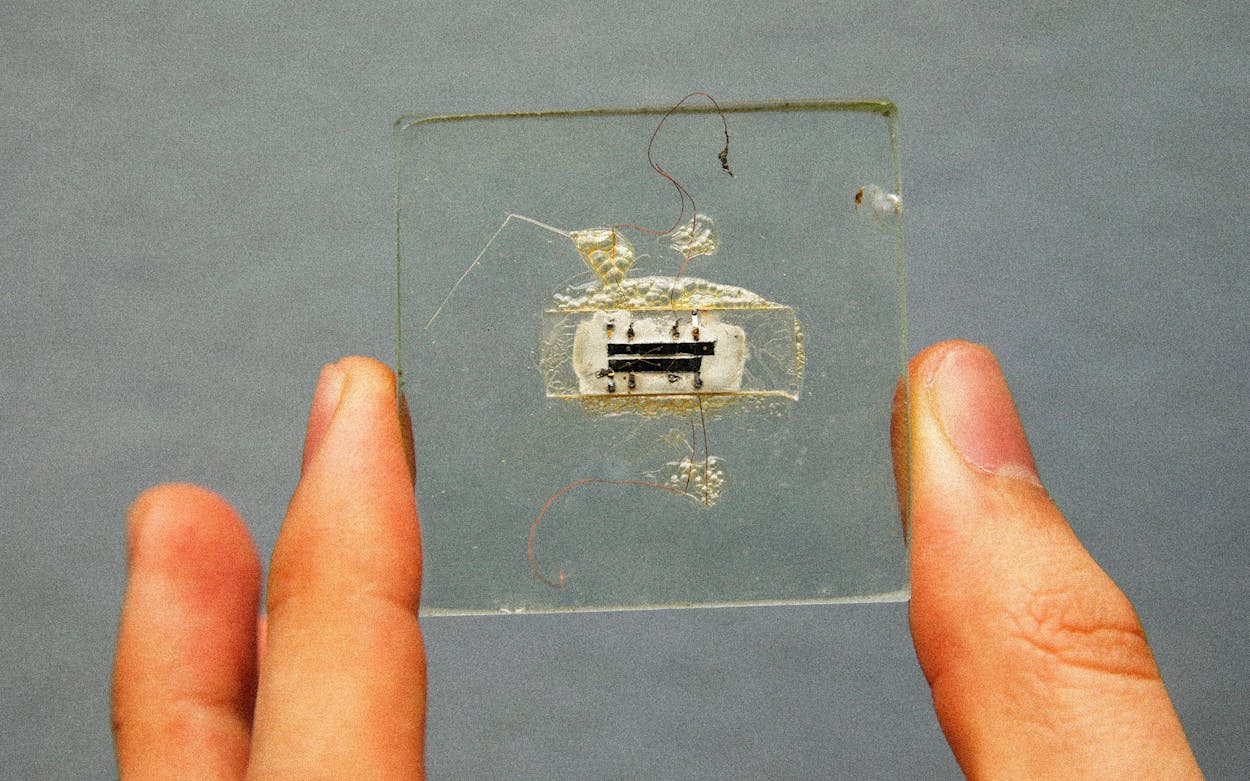In the late fifties, computer engineers faced a challenge known as “the tyranny of numbers.” Advanced machines were beginning to require staggering quantities of circuit components such as capacitors, resistors, and transistors. The downfall of this tyranny began on a hot July afternoon in 1958 at Texas Instruments headquarters, in Dallas, when most of the staff were on vacation. Jack Kilby, a recent hire who hadn’t accrued enough time to take any off, scrawled a brainstorm in his notebook: what if the company manufactured an entire circuit out of a single piece of semiconductor material? This method might someday yield smaller and easier-to-build circuits created as a unit on a single waferlike “microchip,” requiring no hand wiring or soldering.
Mere weeks later, the integrated circuit was born, leading to, among many other things, TI’s invention of the first handheld calculator, in 1967. Kilby eventually won a Nobel Prize for having devised the physical building block of the Information Age, which has brought us the laptop computer, the smartphone, and the control board that tells your dishwasher to shift to the rinse cycle.
The semiconductor industry was hardly done with the Lone Star State. Though Texas—and the U.S. more generally—has lost global leadership in semiconductor manufacturing to Japan, South Korea, and Taiwan, we’re still in the game, thanks in part to the creation, in 1987, of SEMATECH, an Austin-based public-private consortium that sought to reignite American competitiveness in the field. By 2021 Texas companies were racking up $19.3 billion in annual semiconductor exports, more than any other state’s and more than 25 percent of the U.S. total. Today the sector employs tens of thousands of Texans, mostly in the Austin and Dallas areas. And the number will likely increase. TI and Samsung have announced multibillion-dollar factory investments in Sherman and Taylor, respectively, and recent federal legislation has created hefty incentives for domestic chip production.
“An engineer’s drive is to solve problems, to make something work,” Kilby told Texas Monthly in 1982. “Engineering, or at least good engineering, is a creative process.” These days, computer scientists are again talking about running up against intractable physical limitations in advanced chip design. If a solution is out there, it would surprise no one if it came out of Texas.
This article originally appeared in the February 2023 issue of Texas Monthly with the headline “Completing the Circuit.” Subscribe today.







